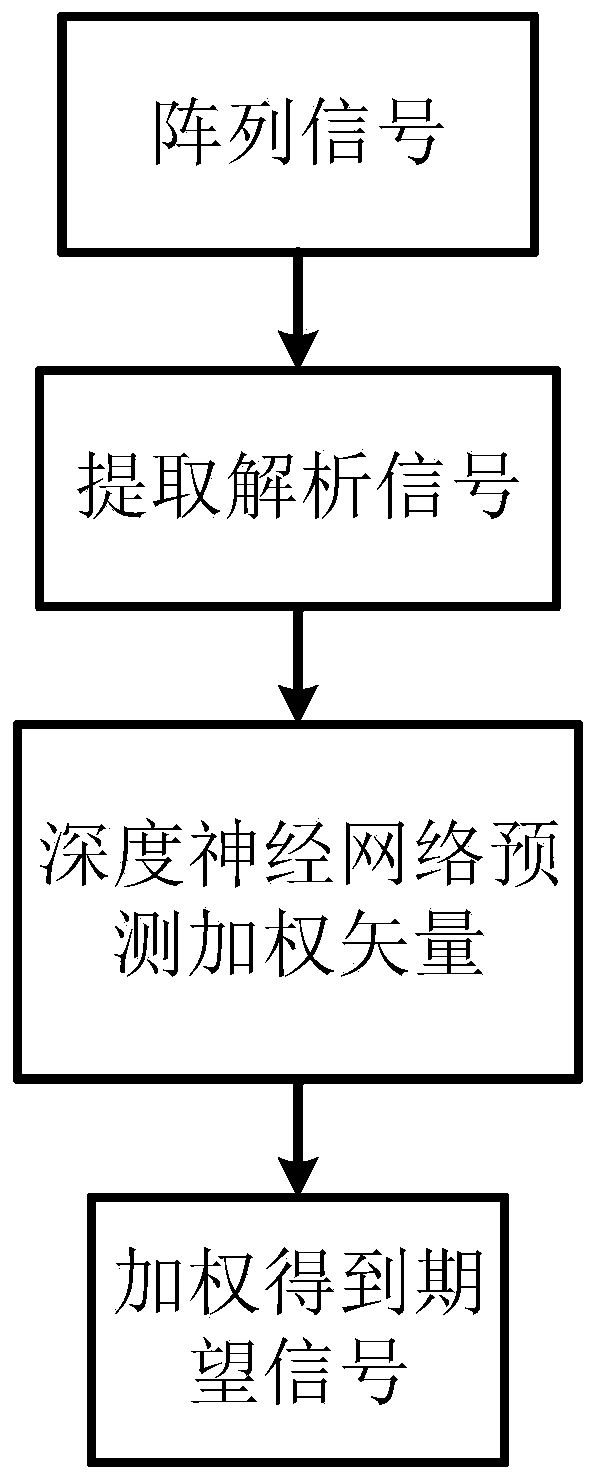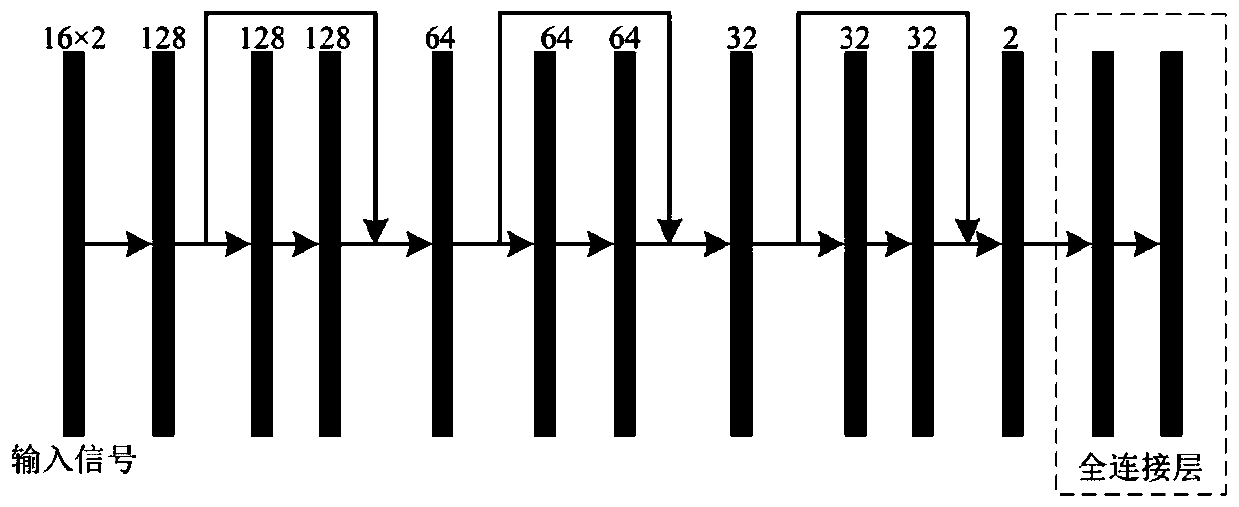Direction-of-arrival estimation method based on deep learning
A direction-of-arrival estimation and deep learning technology, applied in the field of signal processing, can solve problems such as unreliable performance, unrealistic assumptions of signal and noise models, etc., and achieve good suppression effect and robust direction-of-arrival estimation function
- Summary
- Abstract
- Description
- Claims
- Application Information
AI Technical Summary
Problems solved by technology
Method used
Image
Examples
Embodiment
[0018] Take a phased array antenna with 16 elements as an example. Take the range of possible incoming wave directions (from -80° to 80°) to 33 directions evenly, namely -80°, -75°, -70°, ..., 80°, and the deep neural network has a total of 33 output units , each output unit corresponds to a direction, which is used to estimate the probability that the direction of arrival of the desired signal is that direction. The cross entropy between the estimated probability and the real direction of arrival is taken as the loss function, and a large amount of collected data is used to train the deep neural network. The antenna array receives a signal with a length of 100, and arranges the signal of each array element at the same time as a component into vectors in spatial order to obtain a sequence of signal vectors with a length of 100, and each vector in the sequence is a 16-dimensional vector. Take the analytical signal for each signal vector, and get a sequence of analytical signal...
PUM
 Login to View More
Login to View More Abstract
Description
Claims
Application Information
 Login to View More
Login to View More - R&D
- Intellectual Property
- Life Sciences
- Materials
- Tech Scout
- Unparalleled Data Quality
- Higher Quality Content
- 60% Fewer Hallucinations
Browse by: Latest US Patents, China's latest patents, Technical Efficacy Thesaurus, Application Domain, Technology Topic, Popular Technical Reports.
© 2025 PatSnap. All rights reserved.Legal|Privacy policy|Modern Slavery Act Transparency Statement|Sitemap|About US| Contact US: help@patsnap.com


